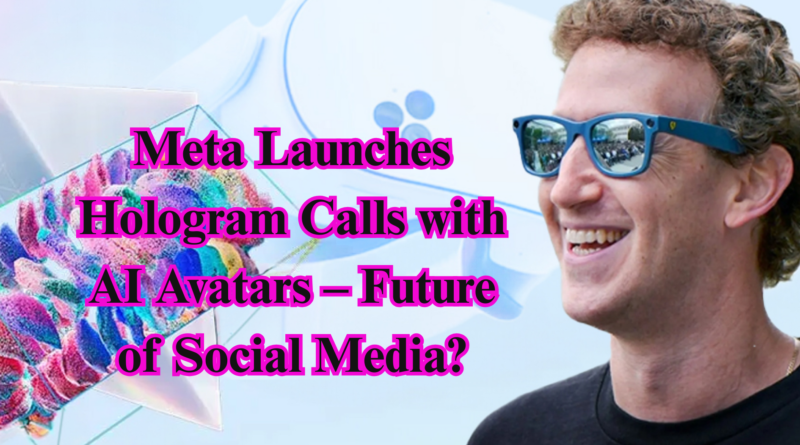Meta Launches Hologram Calls with AI Avatars -Future of Social Media?
In a major leap towards redefining digital communication, Meta has officially launched Hologram Calls powered by advanced AI avatars. This futuristic feature, once confined to science fiction, is now a reality. Users can now interact with lifelike holographic representations of their friends, family, or colleagues in real-time, simulating face-to-face conversations like never before. The technology integrates augmented reality (AR), spatial computing, and generative AI to create hyper-realistic 3D avatars that mimic facial expressions, gestures, and voice tones.
The backbone of this innovation is Meta’s development of ultra-light AR glasses and room-scale projection systems that support holographic rendering. Unlike traditional video calls, these hologram calls create an illusion of physical presence. A person’s AI avatar is generated using real-time motion capture and voice synthesis, enabling them to “be” somewhere without physically being there. Meta’s Reality Labs team describes it as a “portal to another person’s presence.”
Privacy and safety remain critical concerns. Meta claims all holographic data is end-to-end encrypted, with strict user control over data sharing and storage. However, critics argue that the use of AI avatars opens new vulnerabilities – from deepfake misuse to avatar hijacking. In response, Meta is developing digital watermarking and identity verification tools to safeguard authenticity.
The AI avatars are highly customizable. Users can choose to replicate their real appearance or create stylized versions for different environments – like business meetings, social hangouts, or gaming worlds. These avatars are trained using machine learning to understand a user’s voice patterns, emotional tones, and even micro-expressions, allowing for seamless communication.
Meta’s move signals the evolution of social media into social presence. Instead of scrolling through feeds or typing messages, users can enter holographic rooms, attend virtual concerts, or celebrate birthdays with friends as if they’re in the same room. This could redefine how people maintain long-distance relationships, collaborate remotely, or experience events together.
However, this shift also raises philosophical questions. Will people begin to prefer AI-enhanced avatars over real interactions? Could this blur the line between digital identity and physical reality? Experts warn that while the technology is impressive, society must adapt mindfully to prevent isolation and over-reliance on artificial experiences.
From a business perspective, hologram calls could unlock new revenue streams for Meta. Premium avatar customization, virtual merchandise, and branded holographic spaces could reshape the creator economy. Marketers are already exploring how to use holograms for product demos, influencer collaborations, and immersive storytelling.
In conclusion, Meta’s launch of hologram calls with AI avatars marks a transformative moment in the tech world. While it offers incredible potential to enrich communication and connectivity, it also demands a new set of digital ethics, safety standards, and cultural norms. Whether it becomes the future of social media or just a futuristic gimmick will depend on how users and society respond to this next-level innovation.




